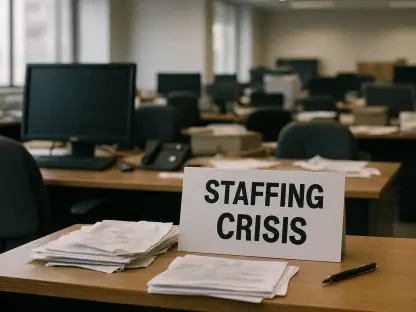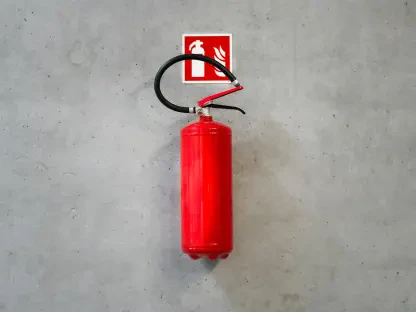Labor unions and progressive congressional Democrats marked Workers Memorial Day with a renewed commitment to reforming worker safety laws. This determination comes amidst significant opposition from a Republican-majority Congress, challenging their efforts to address profound inadequacies in current Occupational Safety and Health Administration (OSHA) regulations. The advocacy highlights an urgent need for legislative modernization to safeguard workers across various sectors, emphasizing the gaps currently leaving many without adequate protection.
Challenging Inadequacies in OSHA Coverage
Expanding OSHA’s Jurisdiction
Labor advocacy groups, spearheaded by the American Federation of State, County and Municipal Employees (AFSCME), are calling for crucial amendments to the existing Occupational Safety and Health Act. Their primary focus is on expanding OSHA’s jurisdiction to include all federal, state, and local government workers—an area currently inadequately regulated. This concern arises from a longstanding gap that has left numerous government employees without comprehensive workplace protection, a loophole closely resembling a vulnerability in a safety net meant to ensure universal worker rights. The legislative amendment aims to rectify these oversight issues, promising more equitable coverage and accountability across all employment sectors.
This expansion proposal recognizes the inherent disparities in current regulatory frameworks, where government employees often operate under state-specific plans rather than a uniform federal standard. As a result, workers face varying degrees of protection nationwide, dependent on the robustness of individual state plans. By advocating for federal jurisdiction over these workers, organizations like AFSCME underscore a commitment to consistent, enforced safety standards and procedures that transcend state lines. Such an effort would undoubtedly bolster confidence among workers, assuring that their safety is a matter of national importance and not contingent upon regional legislature interpretations.
Addressing Workplace Violence
The American Federation of Teachers (AFT) and National Nurses United, in collaboration with other advocacy entities, are focusing their legislative push towards mandating OSHA to tackle the pervasive issue of workplace violence. This initiative is provoked by alarming statistics indicating that women, especially those working in healthcare and social services, face disproportionate instances of workplace violence. The call for robust measures intends to address this immediate threat, ensuring these high-risk environments are subject to enhanced oversight and control measures to protect vulnerable employees.
Workplace violence not only poses direct physical danger but also generates psychological impacts, causing long-term repercussions for victims. The proposed legislation reflects a significant shift towards prevention, advocating for proactive rather than reactive strategies. Key components include risk assessments, violence prevention plans, and crisis response training. By integrating these measures, advocates aim to cultivate a safer, more supportive work atmosphere, reducing the incidence of violence and its subsequent harm. Their approach acknowledges and respects the dedication of those working in frontline professions, underscoring the irreplaceable value they provide to society and the imperative to ensure their safety.
Legislative Obstacles and Opposition
Republican Resistance
Despite the clear needs outlined by labor unions and advocates, the path to reform is hindered by formidable opposition from a Republican-controlled Congress. The Republican-led House Education and Workforce Committee has prioritized efforts to diminish OSHA’s fiscal resources, exemplified by initiatives such as the controversial “NOSHA Act.” Introduced by Rep. Andy Biggs, this proposal seeks a radical dismantling of the Occupational Safety and Health Act itself, representing an extreme pivot away from federally mandated worker protections and exemplifying a significant ideological divide over the role of oversight in workplace safety scenarios.
Such proposals starkly contrast with the demands from labor advocates, highlighting a contentious tug-of-war over the future of worker protections in the United States. Simultaneously, the push to reduce OSHA’s funding and operational scope creates tangible risks to the agency’s efficacy in enforcement actions, potentially compromising its ability to safeguard American workers. This strain on resources could lead to decreased inspection frequencies, leniency in violation repercussions, and overall slippage in maintaining workplace safety standards, illustrating a precarious outlook for employee well-being amid political stalemates.
Grassroots Advocacy
In the face of mounting political resistance, labor leaders such as AFSCME President Lee Saunders have underscored the critical importance of grassroots advocacy. By mobilizing community support and engaging with allies within Congress, these leaders focus on resisting the systematic erosion of established worker protections. Engaged citizens and workers provide a necessary counterbalance to legislative inertia, employing collective voice and action to highlight the irrefutable need for comprehensive worker safety laws.
Participating actively in public discourse is emphasized as a fundamental strategy to sustain momentum and awareness on these pressing issues. Grassroots movements not only bring attention to the importance of worker safety reforms but also create influential pressure on policymakers to act in favor of enhanced protective measures. The synergy between community efforts and legislative allies serves as a powerful catalyst for change, fostering an environment where worker safety becomes a priority despite the challenges imposed by political opposition.
The History and State of Worker Safety Legislation
The Original OSHA Act
The inception of the Occupational Safety and Health Act in the 1970s marked a revolutionary advancement in labor rights and worker safety legislation in the United States. This landmark policy introduced broad measures designed to minimize occupational hazards and safeguard the health and safety of American workers. Beneath its ambitious aims, however, the Act harbors notable limitations, particularly the exclusion of state and local government workers. These exclusions created a bifurcation in protections where certain sectors were robustly safeguarded, while others remained perilously vulnerable.
This legislative oversight remains a contentious issue, emphasizing the need for adaptations that address modern workforce dynamics. With changes in labor force composition and the nature of job environments since its original passage, advocates argue compellingly for the Act’s reexamination and reinforcement. Introducing systematic amendments to encompass a wider range of employees under OSHA’s protective umbrella reflects not only a commitment to labor rights but also an acknowledgment of evolving safety challenges that demand contemporary solutions.
State Variations in OSHA Coverage
Currently, about 40% of workers across the United States are governed by OSHA-approved state plans, extending what are deemed equivalent federal protections. This dual layer of oversight, however, presents its challenges, as the effectiveness and enforcement rigor of state plans can vary significantly from one jurisdiction to another. Such disparity often results in uneven workplaces, where the level of safety assurance depends largely on geographical location, a situation that advocacy groups are working diligently to amend through proposed legislative improvements, ensuring a baseline of consistent, enforceable standards nationwide.
The current framework invites scrutiny, with criticism directed at uneven resource allocation and funding, which can hamper effective implementation and oversight of safety measures. OSHA’s capability to conduct inspections and issue penalties conducive to compliance also remains constrained under the weight of these diverse plans. Calls for comprehensive legislative reform posit a standardized approach that mitigates these variances, fostering an environment where worker safety is uniformly prioritized irrespective of state borders or fiscal limitations.
Healthcare Workers Under Siege
Shocking Statistics
The healthcare sector stands at the forefront of the urgent safety debate, juxtaposed against disconcerting statistics that underscore an epidemic of workplace violence. Healthcare workers, particularly those in social services, encounter a pronounced risk of violence—a disparity compounded by chronic staffing shortages and institutional barriers to implementing stringent safety standards. The violence they face is significantly higher than in other fields, highlighting a critical need for policy interventions that address the unique vulnerabilities faced by these professionals.
Compounding these challenges is a corporate culture often prioritizing financial efficiencies over worker welfare; thus, advocates call for legislative frameworks that enforce rigorous safety standards. The pressing need to safeguard healthcare workers is not merely a statutory requirement but an ethical obligation to protect individuals who dedicate their careers to serving others, often under high-pressure and hazardous conditions. These realities necessitate a multifaceted approach—integrating policy reform, resource enhancement, and cultural shift—to transform workplace safety from a reactive obligation to a proactive guarantee.
“Code Red” Campaign
In response to these pressing concerns, AFT President Randi Weingarten champions enforceable safety standards through initiatives such as the “Code Red” campaign. This campaign urges implementation of patient safety limits, advocating for improved quality of care and equitable protections for those in high-risk sectors. The initiative is pivotal, aiming to create systemic change by prioritizing the needs of healthcare workers in policy debates and organizational practices.
By advocating for robust protective measures, the “Code Red” campaign seeks to empower healthcare workers, reinforcing the notion that their safety is integral to the overall well-being of the communities they serve. This advocacy aims to cultivate workplaces that not only mitigate physical violence but also address related issues such as mental health support and structural safety protocols. The strength of this campaign lies in its comprehensive approach, demanding legislative action while simultaneously engaging public discourse to highlight and combat workplace violence at its core.
Personal Narratives Driving Reform Urgency
Tragic Cases
The debate gains a personal dimension through narratives like that of Joyce Grayson, a visiting nurse whose life was tragically cut short during a routine home-health visit. Her story sheds light on the often underreported risks faced by frontline workers, underscoring the urgent need for standardized safety protocols to prevent such tragedies from recurring. These narratives emphasize the human cost of inadequate safety measures, providing a poignant backdrop for legislative advocacy and reform.
Grayson’s case serves as a somber reminder of the stakes involved, illustrating the vital necessity for comprehensive measures that preemptively address violence in high-risk occupations. Her tragedy ignites a collective call to action among legislators and advocates alike, propelling efforts to achieve legislative breakthroughs that many believe could protect countless others from similar fates. It is a testament to the vital need for legislative frameworks that prioritize worker safety not only as a bureaucratic compliance necessity but as a moral imperative shared across all sectors.
Diverse Voices for Change
On Workers Memorial Day, labor unions and progressive Democrats in Congress reaffirmed their dedication to reforming worker safety laws. This initiative is met with staunch resistance from a Congress dominated by Republicans, creating hurdles in their quest to address the severe shortcomings in the current Occupational Safety and Health Administration (OSHA) standards. Advocates stress the crucial necessity of updating legislation to ensure workers across various industries are adequately protected. The current regulations are insufficient, leaving many employees vulnerable and without the necessary safeguards they deserve. The call for reform not only recognizes the existing flaws but also underscores the urgency with which lawmakers must act to ensure worker safety and well-being in an ever-evolving industrial landscape. The push for change reflects both a commitment to defending worker rights and a response to the glaring gaps in protection that compromise the health and safety of countless employees.









